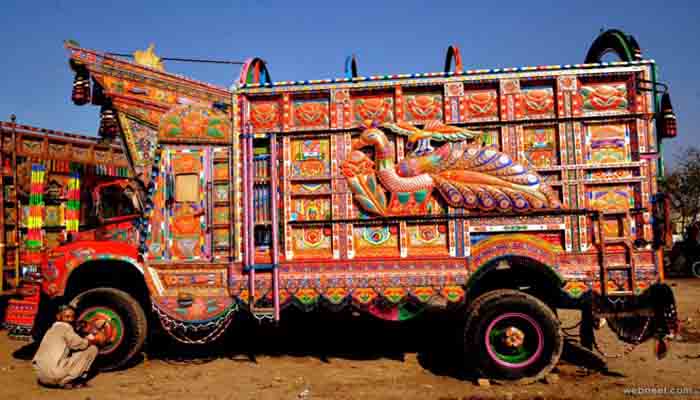
Truck art is a common sight in Pakistan and South Asia. Buses and trucks are decorated to remind their operators of home as they drive far away from their homes, often for months. The art includes colourful paintings, calligraphy, poetry and other decorative changes, such as mirrors, wooden carvings and chains or pendants.
Pakistan’s famed truck art is coming to Dubai’s Palm Jumeirah. This will be in the form of a restaurant and bar.
The project is led by Tribal Truck Art, a Pakistan-based organisation that works to preserve this unique, homegrown form of folk art, which first became recognisable to many abroad when Western tourists began taking photographs of the heavily painted and ornately decorated trucks plying the roads of Pakistan.
Tribal Truck Art’s founder Anjum Rana says her love for the art form began as a young girl growing up near Peshawar.
In 2000, Rana founded Tribal Truck Art. Since then, she’s travelled the world, showcasing the art in places as diverse as Paris, Milan, Jakarta and the Heritage Transport Museum in Gurgaon, India. She has used the truck art style to decorate objects ranging from mugs and porcelain plates to fridges and T-shirts. She has even been recognised by Unesco, which gave her the 2008 Award of Excellence for Handicrafts.
Her latest project, at Fairmont The Palm, will see her put truck art to an innovative use – in the form of a restaurant and bar on the hotel’s premises. She expects it will be ready for the public in a few months time.
Rana says that she’s made it her mission to gain public recognition for truck artists, many of whom have very little or no education.
She also noted that in Pakistan, a truck’s decorations are more than art – they are an important way of attracting business for the trucks.
Additionally, Rana said she believed that preserving truck art is vital in an age in which many young Pakistanis seem to be losing interest.
“Most of (the artist’s) children don’t want to do this job. It’s tedious and takes a lot of hard work. Now they want to make quick money,” she said. “It worries me. So people like us need to sustain the art. It might not be there in the next 20 years, like other folk art.
“It is the youth who should take it forward, set a trend, and invest in this art.”

Post Your Comments